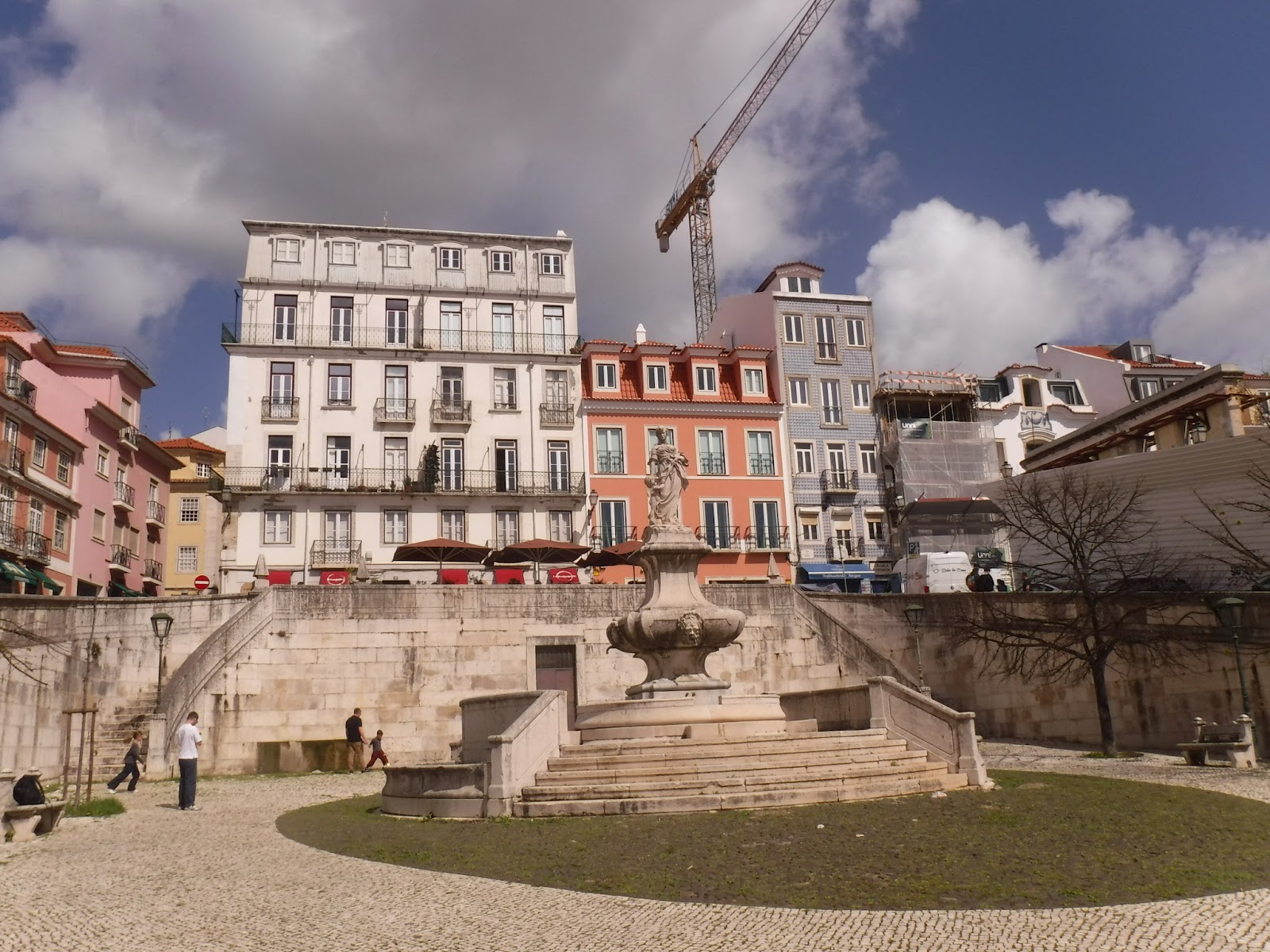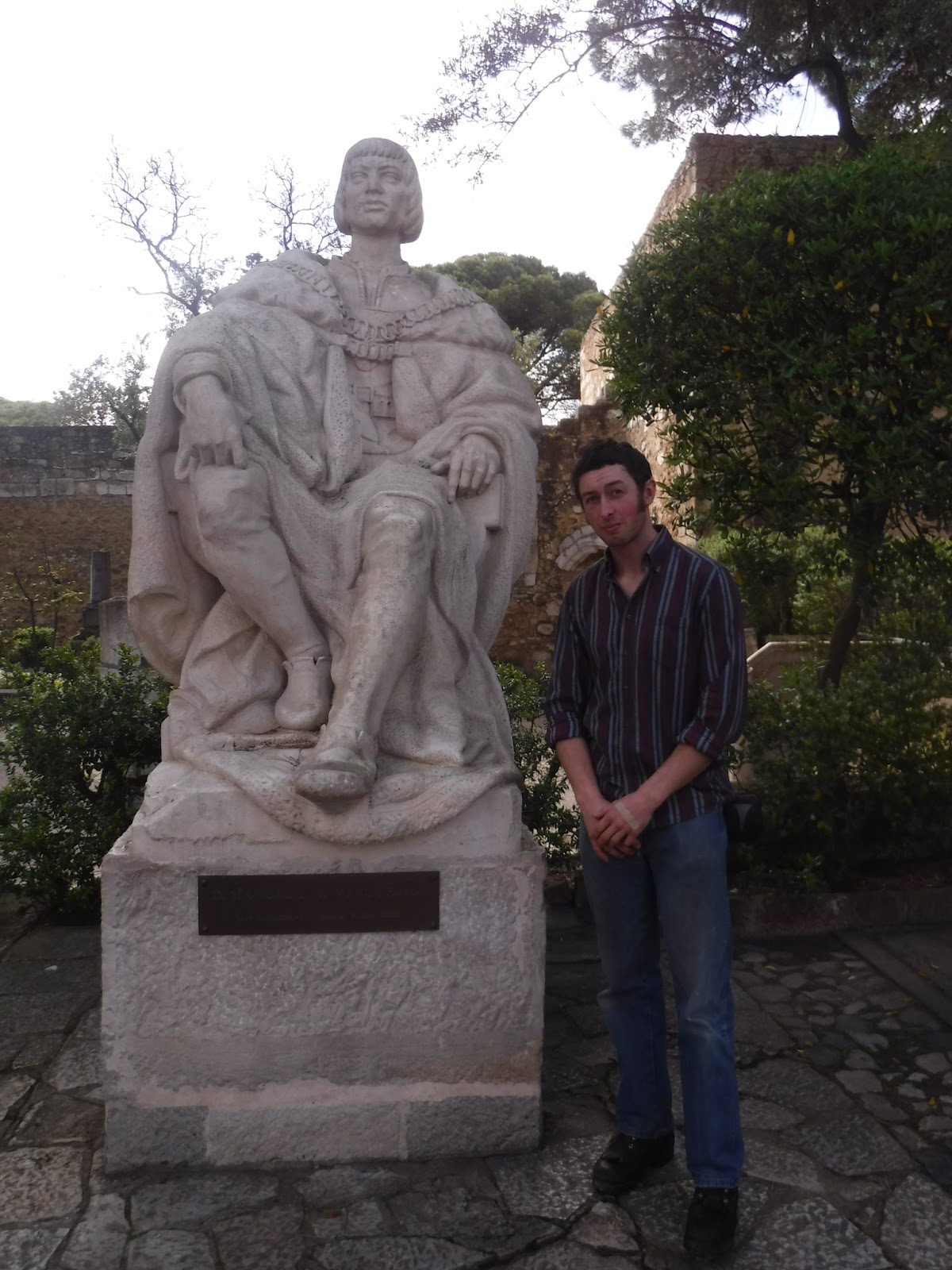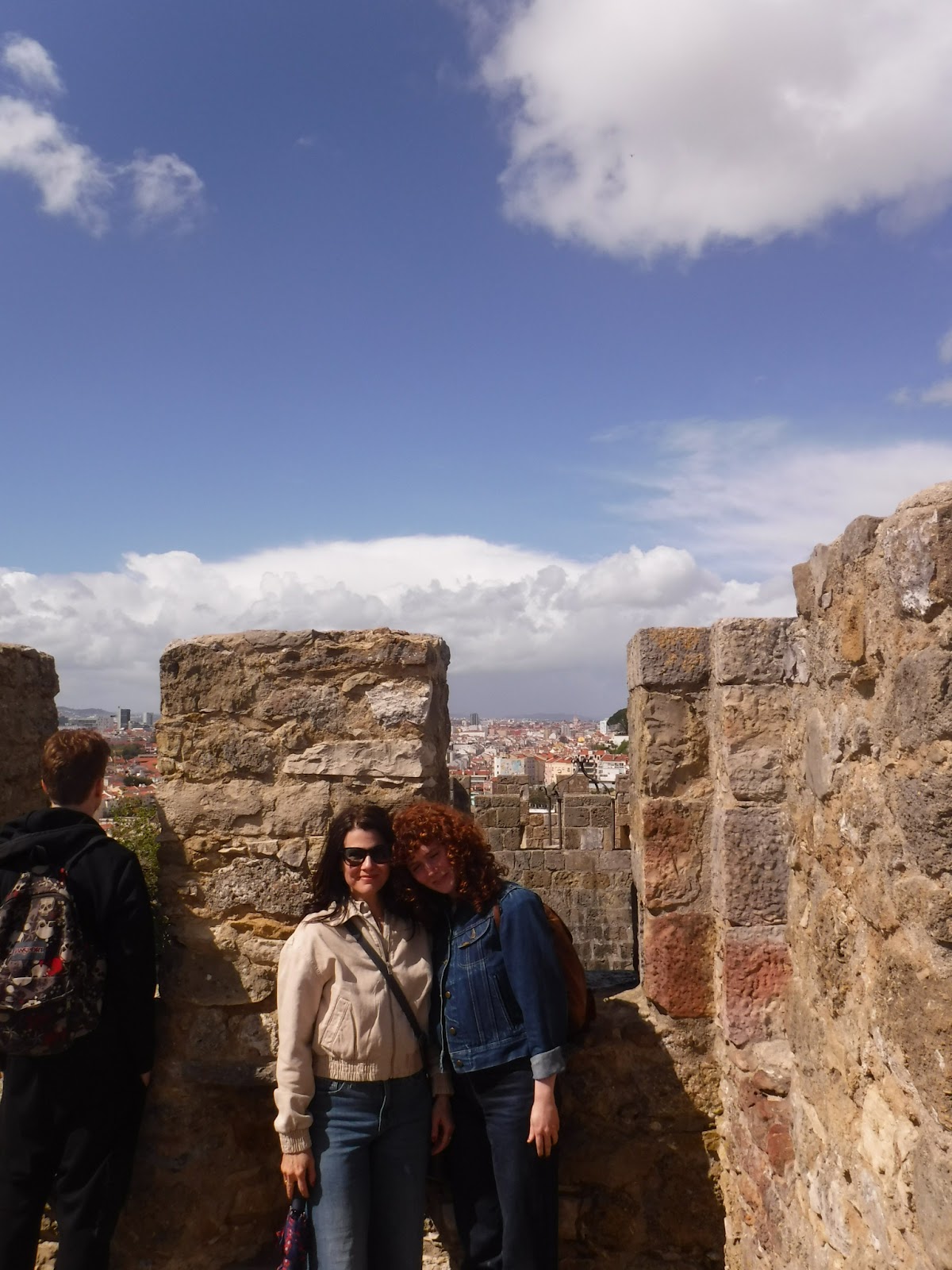Landing in Lisbon bushy tailed but heavy eyed I stumbled through airport shopping mall out to bus stop for an exciting and very Francophone bus to weave me through the city. Before me lay buildings and plazas and monuments which I knew must’ve been around long before the word 'Canada' was first ever muttered. It was all so attractive. I was buzzing in my seat, counting down the stops to mine. Off at a small courtyard with a dried up fountain I walked past a father and two sons playing some back-and-forth football and staggered up stairs to the slanted streets above where our Airbnb lay. It wasn’t until I reached the door that a message from Mia turned me back around to meet at the museum she was exploring directly adjacent to the stop I bounced out of. We shared a warm doorstep embrace before she led me inside.
“There is 17th and 18th century furniture! You’re going to love it…"
And I did. The exhibit began with 14th century chests and chairs all made of oak and other domestic hardwoods with metallic accents. Simple, sturdy and impressive in its maturity. This style and its use of materials were repeated in many other pieces in the 14th and 15th century exhibition, but everything changed in the furniture of the early 17th century. Portugal can be considered the first colonial force of Europe. The Portuguese and their violent empire sailed east and west and slaving and stealing land in both India and Brazil to form colonies. They turned to surrounding forests to continue their pillage, and thus begin the European importation of what are referred to as “exotic “hardwoods. A wood of particular importance to Portuguese cabinetmakers was rosewood, a heavy and strong darkish-brown lumber from trees native to both Brazil (primarily) and India. With Rosewood Portuguese cabinetmaking began to evolve throughout the 17th and 18th centuries that was immediately evident as we walked through the exhibit. It was depressing to think what trail of blood followed behind these pieces of wood, but the craftsmanship was mind-boggling. There was so much flare, so much glamour, the chest and cabinets were covered with patterned gouge carvings, and triangular shapes gave a satisfyingly abstract cohesiveness that begged to be felt. Running your fingers along the grooves provides great pleasure particularly when grooves all met on edges to form sloped ridges. On the desks and the chairs, legs and rails stood out in brilliance. The baroque style is so friggin cool - the turning creates a dense pattern of smooth bulbous beads along leg-length. It’s blend of magical realism and fantasy with traditional woodworking techniques is really inspiring to me. I’d love to incorporate something similar to its whimsicality in a personal or (ideally) professional project.
After museum me and Mia went back to the nearby Airbnb to meet her brother, grandma and mom. From the simple but charming little flat we took transit from the simple but charming little flat we took transit to the first of many castles and palaces to come: the Castillo de S George. I think the first evidence of human occupation of the site dates back to 2000 BC and its function has changed greatly throughout its time from township to fortress to royal housing back to fortress as it is now. With its current form having been built in the eighth century. Walking through the castle gardens, we got our first taste of Portuguese ecology. In my bus ride through the city I’d only noted the deciduous trees planted in streets, with some species looking suspiciously similar to maple (later identified as sycamore maple) so it was fascinating to see numerous tall pine trees with these cool umbrella-like canopies, perfect for protecting folks from weather, but not obstructing any lower tier views. With quick research, I discovered these to be stone pine trees similar to red pine with its bark. In addition to the pine we saw plenty of Portugal's most recognizable tree: the olive tree. This country eats a wholeee lot of them and their pale green leaves speckle its wispy branches like brushstrokes. Another tree of interest on the castle grounds where a few cork oak trees, who - if not the olive tree - would certainly be Portugal's tree. It’s a gnarly looking thing whose bark is harvested every 10 years or so to be processed into cork. As I understand it cork trees are in serious decline so to see one in the flesh was real cool. The most eye-catching (and ear-catching) creature of the gardens, however, is without a doubt the peacocks which roam all throughout the grounds. Fascinating things yes, but fuck do they ever sound annoying. Every minute a male peacock screams like a baby pig as he tries and fails to court a lady. L rizz!
From gardens, we moved inside to the castle walls. A true mediaeval fortress with drawbridge, moat, archery windows and all. we walked through courtyard and up stairs to guardways and archer towers. A source of great distraction throughout the day came from consistently stormy weather: intermittent downpours, persistent, gusts, and temperatures of low teens. Most of us, particularly me, were under dressed for such weather (would summer in Western Europe really feel so different than that Floridan cruise in 2016?), and when the rains came down again, we began walking back downhill in search of food. Restaurants did not all look inviting, and it was clear we were in a tourist trap of relatively inauthentic cuisine for steep prices, but our tummies begged us to be filled and dove into one spot where I ordered chicken paella (which I believe to be Spanish) and was pretty darn satisfied. We continued walking down into Lisbon’s 'old town' and through some of its squares before taking transit back big day for myself jetlagged and sore-footed but an even bigger day for Grandma Linda, who might I remind you, is tough as nails. Onto the next… Sintra.
















No comments:
Post a Comment